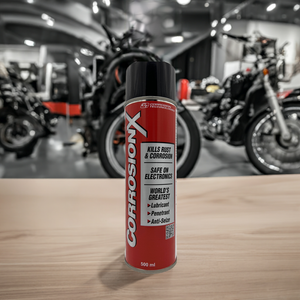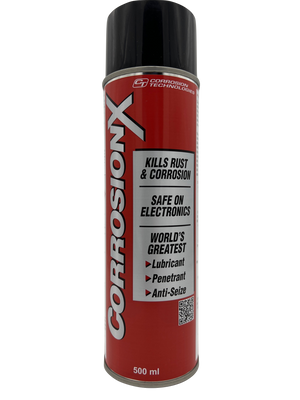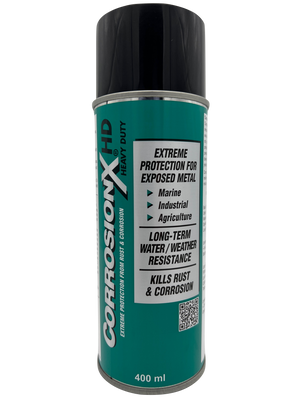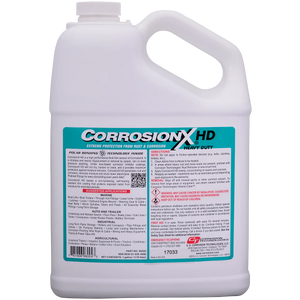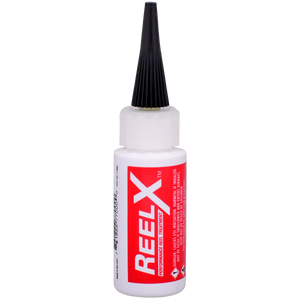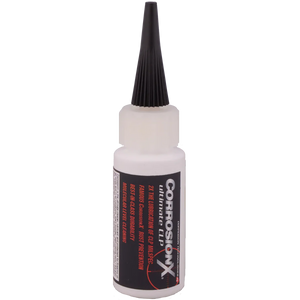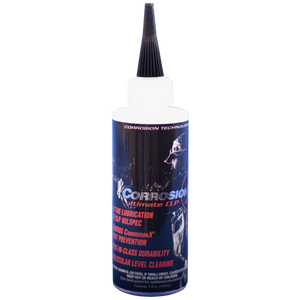When we think about technological advancements in firearms, the first images that come to mind might be sleek new polymer frames, modular rifle platforms, or precision optics with cutting-edge targeting systems. Rarely do we pause to consider the silent enabler of these complex mechanisms: the humble gun oil. For centuries, lubrication has been the often-overlooked hero that keeps firearms running smoothly, protecting them against corrosion, friction, and wear. But as firearms themselves become more sophisticated, the oils we use to maintain them must also evolve—and indeed, they already are. From emerging nanotechnology to eco-friendly formulas and beyond, gun oil is on the cusp of a transformation that promises to redefine how we care for our weapons.
In this deep-dive exploration, we’ll unravel where gun oil technology has been, where it’s going, and how future innovations could turn routine gun maintenance into something more akin to science fiction. We’ll talk about nanoparticles gliding between metal surfaces, “smart” lubricants that adapt to different environments, and even the possibility of self-healing formulas. Along the way, we’ll look at why these changes matter not just to performance enthusiasts and professionals but also to the growing chorus of people concerned about environmental sustainability. So, let’s roll up our sleeves and discover what might be lurking right around the corner in the fascinating world of gun oil technology.
Gun Oil: The Unsung Hero of Firearm Performance
A Legacy of Lubrication
Long before the age of polymer-framed pistols and advanced steel alloys, people were fashioning firearms from wrought iron and simple steels—metals that needed to be kept rust-free to remain functional. Early oils were often improvised from animal fats and plant-based sources. While these concoctions were better than nothing, they had serious drawbacks: they attracted dirt, smelled terrible, and often degraded quickly, especially in harsh conditions. Nonetheless, they played a crucial role in battlefield survival and civilian hunting, preventing catastrophic failures in early matchlock, flintlock, and percussion firearms.
As industrialization ramped up in the 19th and 20th centuries, chemists began to refine petroleum byproducts into more stable lubricants. Over time, these oils grew more specialized. Military research gave us formidable rust inhibitors and multi-purpose cleaners, lubricants, and protectants (CLPs). These were leaps forward compared to the rudimentary oils of yesteryear. Yet even these advanced solutions had limitations in extremely cold, hot, or wet environments. Soldiers stationed in tropical climates quickly discovered that conventional oils could break down or wash off, leaving their weapons vulnerable to rust. Meanwhile, Arctic explorations revealed that oils with higher viscosity could freeze and gum up, rendering a firearm almost useless.
The Modern Era of Gun Oils
Today’s gun oils are a culmination of centuries of trial, error, and scientific inquiry. They often include advanced corrosion inhibitors, synthetic base oils that hold up under high heat, and friction modifiers designed to handle the rapid movement of slides, bolts, and other critical components. There’s a variety for virtually every taste and need: some are specifically designed for long-term storage, others excel in dusty or sandy conditions, and a few are optimized for firearms running suppressors (where carbon fouling is more intense).
While these modern products often do a superb job, our world is changing. Firearms are becoming more precise, subjected to more varied climates, and used in more specialized scenarios. Simultaneously, concerns over the ecological impact of traditional chemicals have become more pressing. That’s where the next evolutionary leap comes into play: the application of cutting-edge science and technology to take gun oils to unprecedented levels of performance, versatility, and sustainability.
From Past to Future: Tracing the Trajectory of Gun Oil Innovation
Why Now?
If modern gun oils already work fairly well, what’s driving the push for even more advanced formulations? One factor is the never-ending drive for efficiency and reliability. Law enforcement agencies, military units, and serious enthusiasts routinely push their firearms to extremes—full-auto fire, suppressed operation, or harsh environmental deployments. They need lubricants that won’t break down under these punishing conditions.
Another motivator is environmental responsibility. Over the last few decades, global awareness of pollution and toxicity has skyrocketed. Gun oils—often petroleum-based—can contribute to environmental harm if disposed of improperly or used in large quantities. As more shooters practice outdoors in natural habitats, concern about chemical runoff and wildlife impact grows.
Finally, we’re in an era of rapid scientific advancements in fields like nanotechnology, materials science, and synthetic chemistry. These breakthroughs are creating opportunities for radical changes in what gun oils can be and how they function. From biodegradable formulas to “smart” lubricants that adapt to temperature changes, the possibilities appear limitless.
Historical Milestones Leading to the Future
- Animal Fat Lubes: Historically used in muzzleloaders. Crude but effective in a pinch.
- Petroleum-Based Oils: Became popular in the industrial age, offering better viscosity stability but sometimes lacking in extreme conditions.
- Synthetic Formulations: Provided improved temperature performance, less residue, and broader environmental tolerance.
- Eco-Conscious Blends: Mark the beginning of the modern push to reduce toxicity and environmental harm.
Each of these stages laid the groundwork for the cutting-edge innovations we’re about to explore.
Nanotechnology: An Invisible Revolution
What Exactly Is Nanotechnology?
Nanotechnology involves manipulating materials on an atomic or molecular scale—think particles thousands of times smaller than the width of a human hair. At this tiny scale, substances can exhibit remarkable properties that differ from what they show at larger sizes. For example, a metal that’s ordinary in bulk form can become extraordinarily slippery, tough, or chemically reactive when broken down into nanoparticles.
Nanoparticles in Lubrication
When you pour oil onto the rails of a semi-automatic pistol or into the bolt carrier group of a rifle, you’re aiming to reduce friction between two metal surfaces. Over time, friction leads to wear, gradually altering the exact tolerances that keep a firearm accurate and reliable. Nanoparticles can drastically reduce this friction by inserting themselves into the microscopic hills and valleys of metal surfaces.
- Ultra-Low Friction: Nanoparticles can create a near-frictionless layer between moving parts, improving the smoothness of every cycle.
- Enhanced Durability: Because these tiny particles fill microscopic gaps, they can mitigate abrasive contact points and slow the formation of wear patterns.
- Heat Management: Some nanoparticles can help distribute or dissipate heat more effectively, preventing hot spots that degrade the oil and the firearm itself.
Potential Hurdles and Considerations
Nanotechnology-based lubricants aren’t without challenges. First is cost. Synthesizing nanoparticles in large quantities can be expensive, potentially pricing these products out of reach for casual shooters. Second, concerns about toxicity and environmental impact remain: if nanoparticles end up in soil or water, what are the long-term effects? Finally, the firearms market can be conservative, and some shooters are hesitant to adopt untested technologies, especially for something as crucial as their firearm’s lubrication.
Despite these potential obstacles, the research is progressing. Preliminary tests show promising results in terms of extended service intervals, smoother cycling, and better protection. If these early findings hold up, nanotechnology could usher in a new era of gun oil that redefines reliability and performance.
Eco-Friendly Gun Oils: Toward a Greener Future
Traditional Gun Oil and Environmental Concerns
Conventional gun oils often rely on petroleum distillates and contain volatile organic compounds (VOCs). When these chemicals evaporate or are disposed of improperly, they can harm air quality and contaminate soil or groundwater. The scale of this impact grows with the number of firearm owners worldwide, as well as the frequency of cleaning and maintenance.
Biodegradable Formulations
One major step toward mitigating environmental harm is the development of biodegradable gun oils. Unlike petroleum-based products, which can persist in the environment for long periods, biodegradable formulations break down much more rapidly, often through natural microbial processes. This not only reduces the ecological footprint but also lessens the risk of accidental harm to wildlife or vegetation.
Key advantages of biodegradable oils include:
- Reduced Pollution: Any overspray or spilled oil is less likely to linger in the environment.
- Safer Disposal: Cleaning rags and oil-soaked patches don’t pose as big a threat in landfills.
- Renewable Ingredients: Some biodegradable oils are derived from renewable plant-based resources, adding another layer of sustainability.
Non-Toxic Gun Oils
Beyond biodegradability, another crucial category is non-toxic gun oils. These formulations aim to avoid harsh chemicals that can be harmful if inhaled or absorbed through the skin. Non-toxic oils are particularly valuable for people who frequently handle firearms, such as instructors, gunsmiths, or competitive shooters who might spend hours each week cleaning and lubricating their weapons.
Non-toxic solutions often rely on synthetic esters or other advanced chemical bases that offer robust protection without requiring substances like lead, mercury, or chlorinated solvents. They’re generally milder on the skin and respiratory system, making the cleaning process safer for the user.
Bridging Performance and Eco-Consciousness
Critics sometimes argue that eco-friendly oils can’t match the performance of traditional blends. However, ongoing research and development indicate that the gap is closing. Many environmentally friendly formulas now deliver corrosion resistance and lubrication on par with petroleum-based products. Firearm manufacturers and independent testers are putting these new oils through rigorous trials—dust chambers, saltwater immersion, high-volume firing—and the results are increasingly positive.
Much of this progress is driven by a cultural shift among firearm enthusiasts. Many appreciate the outdoor environments where they shoot, hunt, or train, and are eager to reduce their ecological footprint. As a result, eco-friendly gun oil isn’t just a niche product anymore; it’s fast becoming a mainstream consideration.
5. Smart Lubricants: When Gun Oil Gets Intelligent
5.1 What Are Smart Lubricants?
Imagine an oil that knows it’s cold outside and thins itself accordingly, or senses extreme heat and responds by becoming more viscous. This may sound like the stuff of science fiction, but researchers in fields like materials science and mechanical engineering are making strides toward “smart” or “adaptive” lubricants. These products incorporate chemical or mechanical triggers that react to temperature, pressure, or even the presence of certain contaminants.
5.2 Adaptive Viscosity
One of the most intriguing possibilities is an adaptive viscosity mechanism. Traditional oils are rated by viscosity at a given temperature range. But firearms can encounter temperature extremes within minutes—like a rifle barrel that heats drastically after repeated firing. An oil that dynamically adjusts its thickness could maintain optimal lubrication across these rapid changes, minimizing wear and the possibility of parts binding.
5.3 Self-Healing Lubricants
Another angle of research focuses on self-healing lubricants, where the chemical structure can regenerate after being sheared away by friction. Picture a high-stress contact area—like the locking lugs on a bolt-action rifle—that sees intense forces with each shot. Traditional oils can get pushed aside, wearing out their protective coating. A self-healing lubricant would “repair” itself as it’s displaced, continually re-forming a protective layer. This would significantly extend the intervals between maintenance sessions and prolong the life of critical components.
5.4 Smart Indicators and Sensors
In an even more futuristic vein, some researchers are exploring the idea of lubricants integrated with micro-sensors that could relay real-time data about temperature, friction levels, or contamination. A shooter might receive an alert on a mobile device saying, “Your lubrication is starting to degrade; consider reapplying.” While this is still highly experimental, it reflects the broader trend of integrating digital technology into almost every aspect of our lives—including firearm care.
Advanced Chemical Formulations: Beyond the Basics
The Chemistry Behind Superior Lubrication
At its core, gun oil is a mixture of base oils, additives, and modifiers that work together to reduce friction and prevent corrosion. The base oil could be mineral, synthetic, or bio-based. Additives might include anti-wear agents, rust inhibitors, anti-foam compounds, and more. While many gun oils share these basic ingredients, the proportions and chemical interactions can differ widely, resulting in varying levels of performance.
6.2 Synthetic Esters, PAOs, and Beyond
A major step forward in lubrication science came with the development of synthetic esters and polyalphaolefins (PAOs). These molecules offer enhanced stability at extreme temperatures, both high and low. Synthetic esters, in particular, can be tweaked at the molecular level to offer superior film strength—the ability of an oil to maintain a lubricant barrier under high pressure. They also tend to have lower evaporation rates, which keeps them from burning off quickly during rapid-fire scenarios.
Graphene and Other Emerging Materials
Graphene, a one-atom-thick layer of carbon, has been hailed as a “miracle material” with incredible properties like high tensile strength, excellent thermal conductivity, and minimal friction. While still in the research phase, some scientists are experimenting with adding graphene flakes to lubricants. The idea is that these super-slick carbon sheets could further reduce friction and heat buildup in firearm mechanisms. Other materials like boron nitride nanotubes are also being considered for similar reasons.
Balancing Protection and Residue
One recurring challenge is residue. A heavily protective oil might become tacky over time, especially if exposed to dust or burnt powder. This residue can gum up finely machined parts. Conversely, a “clean” oil might lack the staying power to protect against rust in humid or salty environments. The art of formulating advanced gun oils lies in finding the perfect balance: a product that coats metal surfaces thoroughly but won’t collect grime or turn sticky. As chemical science progresses, we’re seeing more solutions that approach this ideal sweet spot—long-lasting yet clean-running.
Industry Perspectives and Ongoing Research
Military and Law Enforcement Demands
No discussion of firearm lubrication technology would be complete without referencing the military and law enforcement sectors. These are environments where failure isn’t merely inconvenient—it can be life-threatening. Consequently, advanced research into gun oil often starts with military funding or at least guidance. Soldiers operating in deserts, jungles, or Arctic conditions push firearms (and their lubricants) to the absolute limit. This real-world feedback drives formulation tweaks and eventually trickles down to the civilian market in more refined consumer products.
Similarly, law enforcement agencies have specific requirements. Their officers might be on long shifts in variable weather, keeping the same sidearm or patrol rifle ready for immediate use. Reliability is key, but so is ease of maintenance, since not every officer is a gunsmith. These agencies often adopt a standardized lubricant for uniformity, so any new technology that drastically improves reliability can quickly gain traction—and become a standard across multiple agencies once it proves itself in the field.
Academic and Private Sector Collaborations
Many breakthroughs in lubrication technology stem from collaborations between universities, private research laboratories, and corporate partners. Academic institutions provide theoretical expertise on topics like tribology—the science of friction, wear, and lubrication—while corporations handle practical testing, scale-up, and marketing. Government grants often seed these collaborations, viewing advanced lubricants as part of larger defense, industrial, or environmental initiatives.
In some cases, niche firearm accessory companies also sponsor research to differentiate their products in a crowded market. If a small company can secure a patent on a breakthrough additive or formula, it gains a significant competitive edge, positioning its brand as a leader in gun care technology.
Ethical and Regulatory Considerations
As with any evolving technology, there are ethical and regulatory questions. Could certain additives be harmful if they leach into groundwater? Are there potential health concerns for workers manufacturing these cutting-edge lubricants? Governments and industry bodies frequently impose regulations on chemical compositions, packaging, and labeling. Manufacturers must ensure compliance while still pushing the envelope of innovation.
Additionally, in some jurisdictions, environmental standards are becoming stricter. A gun oil that was perfectly acceptable a few years ago might now face scrutiny if it contains chemicals banned by new legislation. This climate can drive manufacturers toward greener, safer formulas that meet or exceed evolving regulations.
Practical Applications: What These Innovations Mean for Gun Owner
Fewer Maintenance Intervals
One immediate benefit is extended maintenance intervals. If a lubricant can handle higher heat thresholds, repel carbon fouling more effectively, and remain stable across temperature extremes, the user won’t have to clean and reapply nearly as often. This not only saves time but also reduces the cost of purchasing maintenance supplies.
Enhanced Performance Across Shooting Disciplines
Different shooting disciplines place varying demands on firearms. Competitive shooters might burn through hundreds of rounds in a single match, while hunters may only take a handful of shots but subject their rifle to harsh outdoor conditions for days. Long-range precision shooters demand extreme consistency from shot to shot, while clay target enthusiasts fire rapidly in short bursts. Advanced gun oils that maintain consistent viscosity and reduce friction can help all these shooters maintain better accuracy, reliability, and confidence in their gear.
Greater Tolerance for Neglect
Although it’s never advisable to neglect firearm maintenance, life happens. You might return from a trip and forget to clean your gun promptly, or you might store a firearm for months in a closet. A more robust lubricant can provide a safety net, preventing corrosion or rust from taking hold in the short term. Of course, no advanced technology replaces good cleaning habits, but it can mitigate the consequences of occasional oversight.
Contributing to Environmental Responsibility
For many firearm enthusiasts, the outdoors is a second home—whether for hunting, hiking, or sport shooting. Using eco-friendly gun oils helps protect the very environments we cherish. Biodegradable or low-toxicity formulas minimize harm to wildlife and reduce the risk of water and soil contamination near shooting ranges. By adopting these lubricants, gun owners collectively help preserve natural habitats for future generations.
A Brief Word on CorrosionX and Today’s Leading Products
Some modern gun oils already hint at where the future is headed. CorrosionX, for instance, exemplifies advanced protection in harsh conditions, offering a blend of rust inhibitors and lubricating compounds that outperform many traditional oils. Though not necessarily woven with nanoparticles or “smart” triggers, this product showcases how the industry has raised the bar with chemical formulations that penetrate deeply and stand up against moisture, salt, and extreme temperatures. It’s a reminder that cutting-edge gun care isn’t just an idea for tomorrow; it’s already on store shelves, inching us closer to the truly futuristic innovations to come.
Beyond Lubrication: Complementary Advances Shaping Firearm Care
Surface Treatments and Coatings
While we focus on gun oils, it’s worth noting that lubrication is only one piece of the puzzle. Metal surface treatments like nitriding, PVD (Physical Vapor Deposition) coatings, and diamond-like carbon (DLC) can drastically improve a firearm’s resilience to wear, rust, and heat. These coatings often work synergistically with advanced lubricants—if the metal has a tough outer shell, a specialized lubricant can build on that foundation to minimize friction and near-eliminate the risk of corrosion. As coatings become more popular, gun oils specifically tailored for these new surfaces could become an emerging niche.
Cleaner Burning Ammunition
Another trend that impacts lubrication demands is the proliferation of cleaner-burning ammunition. Traditional gunpowder can leave substantial carbon and residue, which can mix with oils and create a sludge that fouls the firearm. Advanced powders and bullet coatings reduce this buildup, thereby extending the life of your lubricant’s protective film. Combined with next-generation gun oils, firearms could run cleaner, longer, and with fewer malfunctions due to fouling.
Smart Gun Components and Diagnostics
Electronic triggers, integrated shot counters, and real-time ballistic calculators are making their way into the firearm world. It’s conceivable that these digital systems could interface with “smart” lubricants, using embedded sensors to track friction levels or internal temperatures. A futuristic scenario might see your rifle’s onboard computer sending you a maintenance alert after a certain number of cycles or once friction rises beyond a safe threshold. Although still speculative, the convergence of smart electronics and advanced lubricants is an exciting possibility.
Pushing the Boundaries: Speculative Visions of Gun Oil’s Future
Liquid Crystal Lubricants
Some scientists are experimenting with liquid crystalline phases—materials that behave both like liquids and crystals. While still in the early research stage, these materials could offer extremely low friction coefficients and unique thermal properties. If integrated into gun oil, they might adapt at a molecular level to shifting pressures or speeds, maintaining a protective layer even under extreme mechanical stress.
Lubricants with AI Integration
Artificial Intelligence might seem like an odd match for a product as straightforward as oil, but consider advanced robotics industries, where AI systems monitor mechanical stress in real time. Translated to firearms, an AI-driven sensor suite could interpret ballistic data, user shooting habits, and environmental conditions to determine the optimum viscosity or additive release. The lubricant itself might not be “smart,” but the integrated system managing it could be, leading to dynamic dispensing systems that only deliver the necessary amount of lubrication at critical points.
Ultralight, Multi-Functional Coatings
As manufacturing processes evolve—particularly 3D printing of metals—new geometric designs can reduce friction simply through innovative shapes. Future “lubricantless” firearms might rely on advanced coatings and micro-textured surfaces that require minimal or no oil, using integrated lubricant pockets within the metal itself. The line between “oil” and “coating” could blur, resulting in firearms that come out of the factory pre-lubricated for their entire lifespan. Though still theoretical, it represents a dramatic shift in how we conceive of firearm maintenance.
Challenges and Realities: Bridging the Gap from Concept to Market
Cost and Scalability
High-tech lubricants featuring exotic materialor complex manufacturing processes will initially carry premium price tags. Widespread adoption in the consumer market typically requires that these products become more affordable. Until then, they may remain niche items used by specialized military units, competitive shooters, or collectors willing to pay top dollar.
12.2 Compatibility and Testing
Any new lubricant must be tested extensively for compatibility with diverse firearm materials—steel, aluminum, polymer, and various coatings. If a cutting-edge oil degrades plastic frames or rubber seals, it won’t succeed commercially. Firearm manufacturers, military labs, and private testers must collaborate to ensure these new products meet rigorous standards for performance and safety.
Regulatory Hurdles
Chemical formulations are subject to regulations that can vary widely by country and region. A product that is legal in one jurisdiction could face restrictions in another, especially if it involves novel or untested compounds. Navigating this legal landscape can slow down or even halt the release of innovative lubricants in certain markets.
12.4 Shooter Acceptance
Perhaps the most significant hurdle is cultural. Many firearms enthusiasts have strong loyalties to tried-and-true products. Convincing them to switch to a futuristic “smart” lubricant or a nanotechnology-based product could require extensive proof of reliability. Testimonials, stress tests, and real-world adoption by reputable organizations often play a huge role in shifting market perceptions.
The Human Factor: Impact on Training and Technique
Reduced Maintenance, Not No Maintenance
A more advanced gun oil doesn’t eliminate the need for regular checks and cleaning. Training programs—whether for military, law enforcement, or civilian shooters—will have to update their curricula to reflect new lubrication capabilities and limitations. For instance, if a new self-healing oil drastically extends intervals between cleanings, instructors must still emphasize that a quick inspection can catch problems unrelated to lubrication, such as a cracked spring or worn extractor.
Confidence and Performance
Police officers, soldiers, and competitive shooters all rely on their firearms to function flawlessly. Knowing you have a cutting-edge lubricant that’s proven to withstand the extremes can boost confidence. This psychological edge shouldn’t be underestimated. Athletes in any field know that belief in their equipment can positively influence their performance under pressure.
Potential Shift in Firearms Design
When you reduce friction and wear to near-negligible levels, you open the door for more radical firearm designs. Engineers could experiment with tighter tolerances, more intricate moving parts, or advanced materials that previously seemed too fragile. Gun oil innovation and firearm design could spur each other onward in a virtuous cycle, each new leap enabling the other to push boundaries further.
Looking Ahead: A World of Possibilities
We stand at the threshold of a new chapter in firearm maintenance—one where nanotechnology, eco-friendly chemistry, smart lubricants, and advanced materials come together to offer solutions that sound more like science fiction than fact. Yet the progress is real, and the momentum is undeniable. Researchers are publishing papers, patents are being filed, and prototypes are making their way into selective fields. The main question isn’t whether gun oil technology will evolve in the coming decades, but how quickly and how profoundly.
Imagine a future where firearms seldom need major cleanings, where a single maintenance session can last for thousands of rounds under any environmental condition, where sensors seamlessly communicate when and how to refresh your lubricant, and where the environmental footprint of your shooting hobby or profession is negligible. That’s the horizon we’re pointing toward. Of course, not every futuristic concept will pan out, and some might take years—or decades—to become commercially viable. But the trajectory is clear: gun oil, once an afterthought, is now a canvas for innovation that touches engineering, chemistry, and even digital technology.
Conclusion: Embracing the Next Evolution
Gun oil has come a long way from the days of smelly animal fats and rudimentary petroleum distillates. Today’s top-tier products already exhibit remarkable capabilities—resisting extreme temperatures, penetrating microscopic crevices, and protecting against rust in punishing conditions. Yet the story is far from over. In the years to come, we’ll likely witness an entire ecosystem of high-tech, eco-friendly, and possibly even “intelligent” lubricants that radically transform how firearms are maintained and used.
For firearm owners—whether casual enthusiasts, competitive shooters, or professionals in the military or law enforcement—staying informed about these developments can offer tangible benefits. Early adopters may gain a competitive edge in accuracy or reliability, while environmentally conscious users can opt for biodegradable, non-toxic solutions that safeguard the landscapes where they shoot or hunt. The robust synergy between ongoing research and market demand means new products are likely to appear faster than we might expect.
Ultimately, the future of gun oil technology reflects the broader spirit of innovation that drives the firearms community at large: a blend of tradition and progress, of reverence for proven methods and excitement for the next big leap. As we evolve firearms to be more accurate, more reliable, and more sustainable, it’s only fitting that the oils protecting their critical moving parts evolve in tandem. The horizon is brimming with possibilities—so keep your eyes on the lab reports, your ear to the ground, and your firearms ready to benefit from the next generation of gun oil technology.
Frequently Asked Questions (FAQ)
1. What is nanotechnology, and how does it relate to gun oil?
Nanotechnology deals with materials at the atomic or molecular scale, often resulting in novel properties like ultra-low friction. In gun oil, nanoparticles can penetrate microscopic gaps between metal surfaces, reducing wear and enhancing performance in extreme conditions.
2. Are eco-friendly gun oils really as effective as traditional petroleum-based products?
Ongoing research suggests they can be equally effective, offering corrosion protection, lubrication, and stability under harsh conditions. While early eco-friendly formulas struggled to match petroleum oils, newer products are closing the performance gap fast.
3. What are “smart lubricants,” and could they really benefit everyday shooters?
Smart lubricants are formulations that adapt their viscosity or replenish themselves based on changes in temperature, pressure, or friction. Although still in experimental phases, they hold promise for reducing wear and maintenance intervals, benefiting a wide range of firearm users.
4. Could self-healing lubricants really eliminate routine firearm cleaning?
Unlikely. Self-healing lubricants extend the period between cleanings by continually replenishing the protective film. However, they can’t remove carbon buildup or other debris, so routine inspections and cleanings will remain essential.
5. Is it possible that future firearms won’t require oil at all?
Engineers are exploring advanced surface treatments and coatings that might drastically reduce the need for external lubricants. While a fully “lubricantless” firearm is theoretically possible, most experts believe a small amount of lubrication will always be beneficial to ensure consistent performance.


